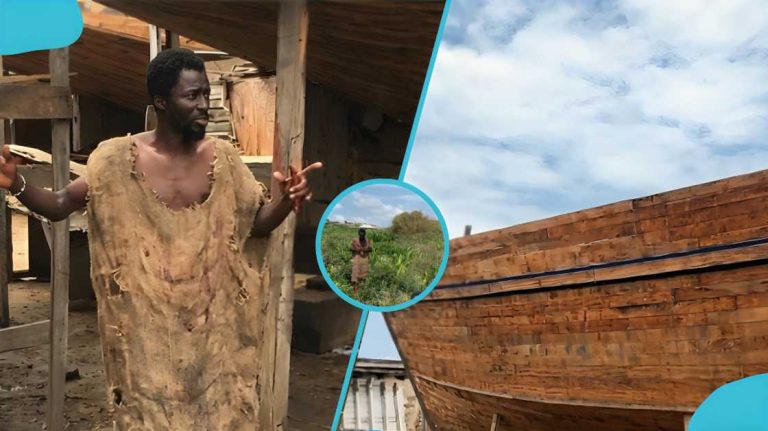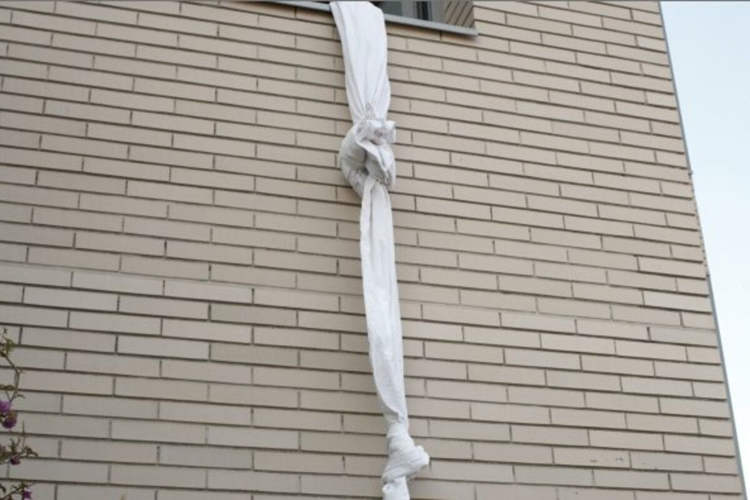Dr. Jeff Wilson, a professor of environmental science at a university in Austin, Texas, is living in a 33-square-foot dumpster for a year. He kickstarted the unique project in February, and his efforts have earned him the nickname ‘Professor Dumpster’ among his students. Harvard-educated Wilson says that his goal is to show people that it is possible to have a pretty good life even in austere conditions.
The dark green dumpster is currently parked behind the women’s residence halls in a corner of Huston-Tillotson University’s campus. Wilson describes it as ‘the most thoughtfully designed, tiniest home ever constructed’. Before he moved in, Wilson’s students cleaned and fixed the dumpster for him, making sure that it wasn’t smelly or unfit for living. And to make the dwelling as energy efficient as possible, they plan to set up solar panels and an energy producing toilet.
Having previously lived in a sprawling 2,500 square foot house, Wilson started downsizing his life after going through a divorce. He moved into a 500 square foot apartment, and sold all his spare clothes and furniture for $1 per item. He soon realized how little he needed to survive, and dumpster-living sounded like a great idea.
When the lease on his apartment ran out, he moved into his office for seven months, while setting up the dumpster. “Keeping that secret for seven months, especially from the 3am cleaning staff and the 24-hour security, much less the students and my colleagues, was interesting in itself,” he admitted.” But he soon pitched the idea at work, and got the university to sanction and support The Dumpster Project. The project revolves around using only one percent of what the average American uses – one percent of the space, the water, and the energy, and producing only one percent of the waste.
“We could end up with a house under $10,000 that could be placed anywhere in the world,” Wilson said, while pointing out the merits of a dumpster home. “Fueled by sunlight and surface water, people could have a pretty good laugh.” He’s a big believer in minimalism now – he owns only four pairs of pants, four shirts, three pairs of shoes, three hats, and a few bow ties. All his worldly possessions are stored under a recently installed false floor, along with camping cooking equipment.
It took Wilson a few months to get used to the place, but after installing some useful amenities, he started feeling comfortable in his new home. One of the first things he did was to replace the tarp roof with a sliding pitched roof with a weather station on top. Six months after he moved in, he installed a modest air conditioner in an effort to cope with the terrible Austin heat.
“We didn’t want to make it too easy,” he admitted. “I wanted to see how elastic my sleeping habits would be relative to temperature and humidity. I found that I could actually get to sleep pretty well as long as I went to bed at about 11:00pm.” Using the weather station, he tracks his personal climate in real time, he pulls up weather-related data to know what to expect.
Wilson said that a lot of good things have happened because of the project – the summer’s been unbearable, so he spent more time in the community, walking around and interacting with people. “I almost feel like East Austin is my home and my backyard,” he said proudly.
In the second phase of The Dumpster Project, Wilson will receive more amenities like a bed, a lamp, and a dome to catch rainwater and provide shade. He will also have a tiny sink and a kitchen, and locks, making it the only dumpster in the world with interior locks. But the one thing he’s eagerly waiting for is a toilet.
He currently uses facilities at the university’s gym, but “getting to the toilet sometimes requires kind of a midnight run,” he said. He will soon have his own shower and toilet, though, which will be connected externally. “You don’t really want to have a composting toilet inside of a closed-up 36 square feet,” he explained.
The third phase of the project will see Wilson entering the ‘uber dumpster home’ – his dumpster will be unplugged from the energy grid and solar panels will be installed instead. More aesthetic work will be done as well, minimizing the dumpster effect. “We kind of want to do the outside in a modern Dwell look,” he said. “We want it basically to be such that if you were blindfolded and placed inside it, you’d just think you were in a very tiny house.”
“We bring everything into the home these days,” he said. “You don’t really need to leave home for anything, even grocery shopping, anymore. What’s interesting about this (project) is it’s really testing the limits of what you need in a home. The big hypothesis we’re trying to test here is, can you have a pretty darn good life on much, much less? So far, I have, I’d say. A better life than I’ve had before.”
Having said that, Wilson does have an arrangement in place in case he needs an occasional break from the box. His students can opt to take his place for the night.
Once his year of dumpster living is up, Wilson plans to take his bin across the United States, to educate students about the concept of ‘less is more’. He’s already going around to local elementary and middle schools to talk about his experience of living in a home with no modern facilities. One of the most pressing questions he’s been asked is: “How is Santa going to get in?”
Photos: The Dumpster Project/Facebook


















